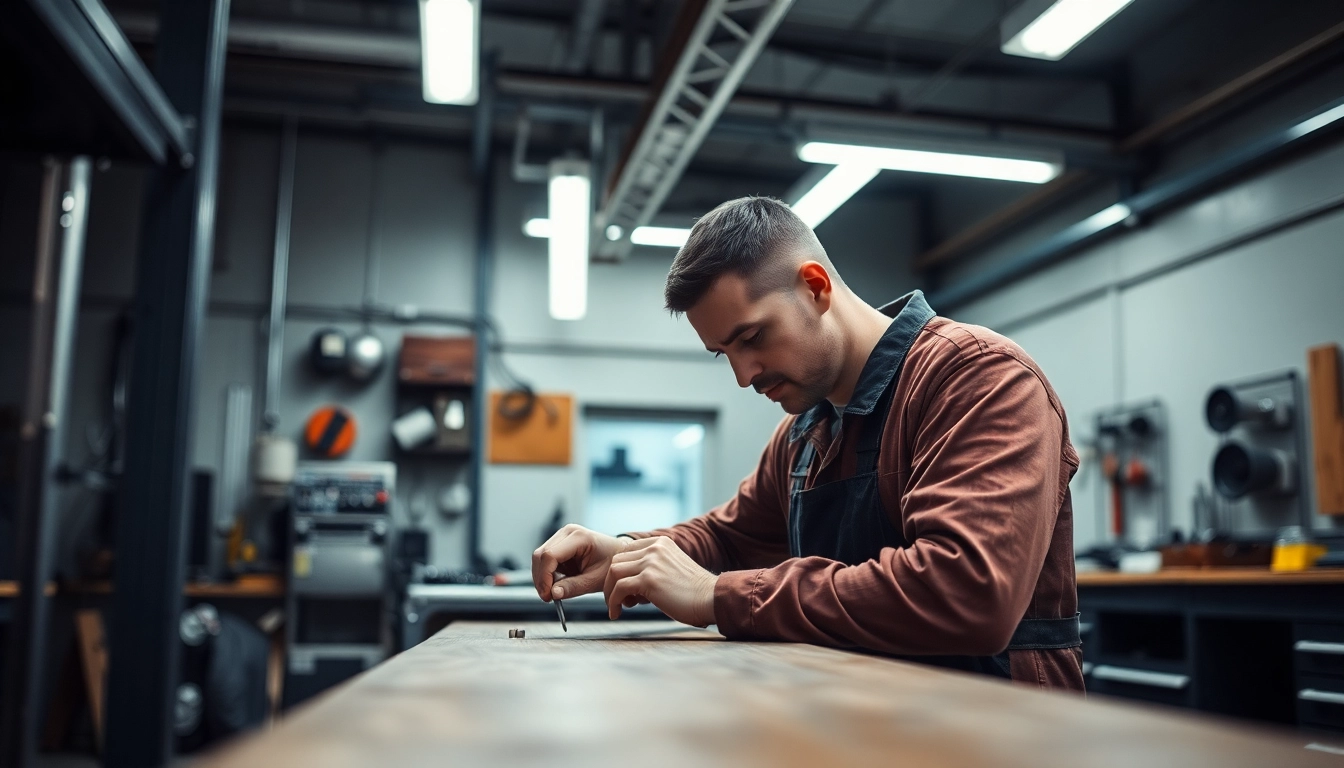Understanding Back Bar Repair
Back bar repair is a critical aspect of maintaining the structural integrity and functionality of bar equipment in commercial settings. This includes establishments such as restaurants, bars, and even home bars where aesthetics and utility are paramount. A functional back bar not only enhances the efficiency of service but also adds to the overall ambiance of the space. When it comes to back bar repair, understanding the underlying issues is vital for ensuring that both functionality and aesthetics are preserved. From assessing damage to factors such as cost and maintenance, this comprehensive guide will provide you with all the information needed for back bar repair and upkeep.
What is Back Bar Repair?
Back bar repair refers to the process of fixing or restoring the back bar area, which typically includes shelving, storage units, lighting, and other fixtures used for serving beverages. This may involve repairs to wooden surfaces, metal fixtures, or even plumbing associated with sink areas. Given the high volume of traffic in bars and restaurants, these areas are prone to wear and tear, leading to a variety of issues ranging from cosmetic imperfections to significant structural damage.
Common Issues Faced
Common problems that may arise in back bars include:
- Structural Damage: This could involve broken shelves, cracked wood, or damaged metal components.
- Aesthetic Wear: Scratches, stains, and water damage can detract from the visual appeal.
- Functional Failures: Problems with lighting or plumbing that can hinder operations.
Materials Needed for Effective Repair
The materials required for back bar repair will generally depend on the type of damage encountered. Common materials include:
- Wood Glue and Clamps: For repairing wooden components.
- Metal Fillers and Paint: For restoring metal surfaces.
- Replacement Shelving: If existing shelves are irreparable.
- Tools: Basic tools like screwdrivers, hammers, drills, and measuring tapes.
Evaluating Damage on Back Bars
How to Inspect for Structural Damage
Inspecting a back bar for structural damage involves a systematic check of the entire unit. Start by examining:
- Shelves: Look for sagging or broken areas.
- Supports: Ensure all braces are intact and not corroded.
- Connections: Check screws and nails for looseness.
Identifying Weak Points
Identifying weak points is crucial, as it helps to pre-emptively address issues that could worsen over time. Focus on areas that receive the most wear, such as:
- The bottoms of shelves where bottles may spill
- Corner joints of wooden shelving
- Areas around plumbing fixtures
When to Seek Professional Help
If the damage is extensive or involves complicated components, such as electrical or plumbing repairs, it’s advisable to seek professional help. Signs that indicate the need for professional assistance include:
- Severe structural integrity issues
- Complicated electrical or plumbing issues
- Extensive aesthetic damage that requires specialized skills
Step-by-Step Back Bar Repair Process
Preparation: Tools and Environment
Before starting any repair work, ensure you have the following tools ready:
- Power Drill
- Wood Glue
- Clamps
- Sandpaper
- Paint or Stain
Also, prepare the environment by clearing the area around the back bar, ensuring adequate lighting, and setting up a workspace for your tools.
Repair Techniques: DIY vs. Professional
DIY repairs can be practical for minor issues. For example, if you notice loose shelves, simple reinforcements with screws and brackets can suffice. However, for significant repairs, consider the pros and cons of professional services. Professional repairs can save time and ensure quality, especially where specialized skills and tools are required.
Finishing Touches: Ensuring Longevity
After completing repairs, ensure all surfaces are properly finished. Sand down rough edges and apply wood sealant or paint as necessary. This not only enhances the appearance but also adds a layer of protection against future damage.
Costs Involved in Back Bar Repair
Understanding Pricing Factors
When budgeting for back bar repair, consider these factors:
- Extent of Damage: More extensive repairs naturally cost more.
- Materials Used: Higher quality materials will raise your total.
- Labor Costs: If hiring professionals, labor fees will significantly influence the final price.
Comparative Analysis of DIY vs. Professional Repairs
DIY repairs might save you money on labor but can lead to costly mistakes if not executed correctly. In contrast, professional repairs, while more expensive upfront, can yield better long-term results and save you resources down the line.
Budgeting for Unexpected Costs
Always set aside a portion of your budget for unexpected costs, typically around 10-20% of the total estimated costs. This can help cover surprises such as hidden damage or additional materials needed during the repair process.
Preventative Measures for Back Bar Maintenance
Regular Checks and Maintenance Tips
To ensure the longevity of your back bar, implement regular checks and preventive measures:
- Conduct visual inspections monthly.
- Clean surfaces regularly to prevent damage from spills.
- Address minor issues immediately before they escalate.
Ensuring Longevity with Proper Usage
Training staff in proper handling and care can significantly extend the lifespan of back bar fixtures. This includes:
- Teaching staff to carefully place and remove heavy bottles and glasses
- Implementing a system for reporting damages or concerns
- Ensuring that equipment is used according to manufacturer instructions
Resources for Further Learning
For more in-depth understanding of back bar maintenance and repair techniques, consider exploring the following resources:
- Books on commercial bar construction and maintenance
- Online forums and communities for bar owners
- Videos on DIY repair techniques


